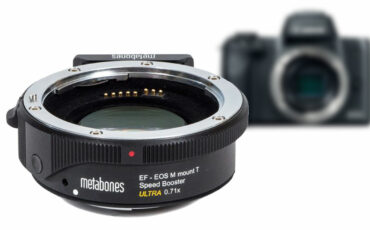
Eleven years after its launch, Canon quietly discontinued their first mirrorless system, the EOS-M. Aimed mostly at the beginner-enthusiast segment, the system had some commercially successful years but hasn’t presented many technological breakthroughs. Most models went hand-in-hand with DSLR models, just in a smaller package.
EOS-M cameras usually stood out as very compact and affordable options, but some stood out as being particularly capable. The EOS-M6 Mark II is a good example, combining one of the highest resolution APS-C sensors on the market today, 20fps speed, 10-bit 4K video, and more, all encased in a very compact package.
The EOS-M50 Mark II was a well-balanced beginner’s camera, offering an easy-to-use interface with decent image quality and video specs. It served many as their first “real” camera and is still quite popular in the content-creation community. But as nice as those cameras may be, cameras alone are never enough.
Canon EF-M lens lineup for EOS-M cameras
Canon R5 C Ultimate Video Manual
Short flange distance enables some radical changes to lens designs. It seems Canon mostly tried to reduce size and weight when designing the EF-M lenses. That might be seen as a missed opportunity, but it does make sense considering the system’s target audience, and its coexistence alongside the EF behemoth of a line encompassing every professional need.
The (rather sad) outcome is a lean lineup, consisting of a handful of variable-aperture zoom lenses. Prime lenses enjoyed a bit more innovation. The 32mm f/1.4 was fairly impressive, the 22mm f/2 is one of the smallest primes around, and the funky 28mm f/3.5 Macro actually had a dual-LED setup over its front element.

While refreshing, this kind of somewhat whimsical ingenuity cannot hold a lens lineup on its own. The EF-M roster lacked some fundamental lenses and didn’t offer a meaningful upgrade path. Even SIGMA’s f/1.4 prime trio couldn’t save the day. While commercially successful, the system remained somewhat lackluster.

One mount to rule them all
Once the Canon EOS-R, with the RF mount was announced, the EOS-M countdown unofficially started. Back in 2018, Canon still maintained the EOS-M system, mostly by a sensor-size-based segmentation, separating the full-frame pro-oriented EOS-R and the beginner-oriented APS-C EOS-M. Once the R10 and R7 were announced with APS-C sensors and lenses to boot, the fate of the M was sealed. Canon understood that there was no room for two separate systems. Anyone starting their journey with an EOS-R10 should be able to aim higher.
What’s next, and what lessons may we learn?
Bidding farewell to the EOS-M system, one of the pioneers of the mirrorless revolution, makes me wonder. The market these days looks completely different than it did in 2012. An abundance of cameras now populate vlogging or beginner niches, and I assume no one will particularly miss the EOS-M. Canon is rather clear with its intentions about the RF mount and EOS-R system, while other manufacturers have created some compelling alternatives (such as the Sony ZV-E series), so the market will be fine. I will personally take some key insights out of the EOS-M journey:
- No camera, as good as it may be, can succeed in a vacuum created by a lean lens system.
- Keep it simple: One mount can provide a meaningful upgrade vector, so beginners-turned-professionals may gradually upgrade their gear.
- Keep it simple Mark II: A simple, reliable, and straightforward system, strictly aimed at its target audience, may be extremely successful even without significant technological breakthroughs.
- Trial and error are key components to any progress. The contribution made by the EOS-M system is far greater than what meets the eye.
Have you ever had an EOS-M camera? Still do? What are your thoughts about this system? Let us know in the comments!





























